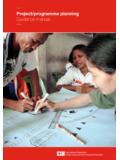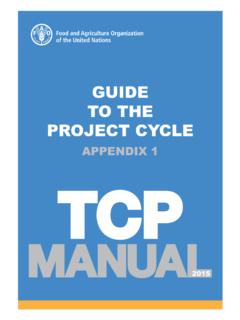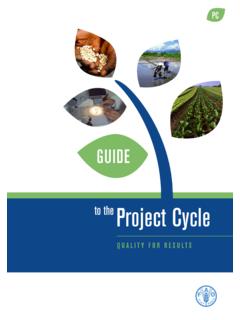Transcription of THE NATIONAL TUBERCULOSIS AND LEPROSY …
1 1 THE NATIONAL TUBERCULOSIS AND LEPROSY programme TB manual 2 FOREWORD The publication of the third edition of the NATIONAL TUBERCULOSIS and LEPROSY programme NTLP) manual marks a big step forward because it underscores the programme s commitment to providing the latest knowledge and developments in TB and LEPROSY control in Zambia. It provides among other challenges, the TB/HIV collaborative activities, paediatric TB, Public-Private Mix, MDR TB and Infection prevention. The manual also provides information on integrating and decentralising NTLP services to the districts and health facility levels TUBERCULOSIS has rapidly become a major health problem in Zambia in the last decade.
2 In spite of the fact that the TUBERCULOSIS control programme has been in existence for a long period and that Short Course Chemotherapy (SCC) has been generally available in Zambia from about 1980. The cornerstone of TB prevention and control remain early identification and adequate treatment of infectious individuals in communities. This means that it is a cardinal responsibility of general health staff as well as all people in our communities to be alert and suspect TUBERCULOSIS in persons who may exhibit symptoms suggestive of TB, such as prolonged cough, persistent fevers, weight loss, loss of appetite coughing up blood and others.
3 The advent of the HIV/AIDS epidemic and its hand-in-glove relationship with TUBERCULOSIS has further aggravated the difficulty of diagnosis and treating TUBERCULOSIS , especially in the urban setting where the number of cases threatens to overwhelm the capacity of the general health care system. A case in point is the problem of ensuring that Direct Observed Therapy Short Course (DOTS) is implemented in a cohesive and systematic manner so as to maintain compliance and improve treatment outcome. The decentralisation of the TB treatment services has not only been a practical imperative (in the face of an overwhelming TB caseload), but is also in line with the overall Health Reform process that emphasises a devolution of responsibilities to the lower levels of the health care system.
4 It is our desire and vision to reduce the problem of TUBERCULOSIS to such an extent that its eventual elimination becomes a virtual possibility. This manual therefore comes at a most opportune time when the overall health planning process is district-focused and emphasizes service delivery at the lower levels. It will enable a variety of health workers at all levels gain knowledge of TB control as well as provide guidance to clinicians, nurses, public and Community Health Workers in the improvement of management and care provided to TB patients.
5 This edition has incorporated a lot of new innovation in TB control and addresses more issues pertaining to TB, TB/HIV, MDR/XDR TB, Paediatric TB, Public-Private Partnerships including patient and community Involvement. It also addresses issues of infection prevention and many other important items necessary for a successful TB control programme . It should be realized that TB is a notifiable disease in accordance with the Public Health Act, Chapter 295 of the laws of Zambia and all care providers attending to TB clients are expected to ensure that such cases are notified in line with the Government policies and guidelines.
6 Lastly, I wish to thank the Directorate of Public Health and Research and all the cooperating partners for making it possible to produce this third edition of the TB manual . It is my hope that this tool will find the widest use in our institutions for a long time to come and that it will continue to be updated as new knowledge is added to the efforts in the fight against TUBERCULOSIS . Dr MITI PERMANENT SECRETARY MINISTRY OF HEALTH. ACKNOWLEDGEMENTS 3 The Ministry of Health would like to express it gratitude to The World Health Organization, Cetres for Disease Control and Prevention, TUBERCULOSIS Control Assistance programme , The Global Fund to fight AIDS, TUBERCULOSIS and Malaria, and the KNCV TUBERCULOSIS Foundation for the financial and technical support rendered towards the development of this manual .
7 Appreciation also goes to all the institutions and organizations that gave technical inputs to the development of the manual such as , ZAMBART Project, CHAZ, CIDRZ, JHPIEGO, UNZA-SoM, JICA,CHEP, CBTO, COBTAG, UTH and all the individuals who participated in one way or the other, who are too numerous to mention. We would like to extend our gratitude to the TB/HIV Coordinating Body for the technical input and initiative to review the manual . We believe that this book will go a long way in meeting the needs of the practising clinicians and all those working in the area of TB.
8 This will help a great deal in standardizing the care and support of those infected and affected with TB as well as those with TB/HIV. Finally, at the Ministry of Health, I would like to thank the TB/ LEPROSY Specialist ( NATIONAL programme Manager) Dr Nathan Kapata and all staff in the TB unit namely, Mrs. L. M Zulu, Mr. M. Malukutu, Ms. Chanda Chikwanda and Mr. C Munyandi for their dedication to ensuring the smooth running of the TB control programme and ensuring the finalization of this manual . Dr V. MUKONKA DIRECTOR PUBLIC HEALTH AND RESEARCH MINISTRY OF HEALTH 4 Index CHAPTER 1: TUBERCULOSIS Epidemiology and Control _____ 7 Introduction _____ 7 Global Epidemiology _____ 7 Zambia Epidemiology _____ 7 Stop TB strategy _____ 8 NTLP Role and set up _____ 10 The NATIONAL TB Control programme 5 year strategy _____ 10 Structure and Functions of NTLP _____ 11 CHAPTER 2.
9 TUBERCULOSIS in Adults _____ 14 Signs and symptoms of TB _____ 15 Physical Examination _____ 16 Diagnosis of TB _____ 16 Collection of sputum specimens from suspects _____ 16 CHAPTER 3: Management of TB _____ 28 Introduction _____ 28 Disease classification _____ 28 Treatment of TUBERCULOSIS _____ 30 First Line Anti TB Drugs _____ 30 Treatment Regimens in Adults _____ 32 Possible Outcomes Of Treatment _____ 33 Patient Compliance and Defaulter Tracing _____ 33 Patient Monitoring and Follow-Up _____ 34 Retreatment patients _____ 35 Side Effects of First Line Anti TB Drugs _____ 36 Re- introduction of TB Drugs after severe side effects (Drug Challenge) _____ 38 Management of drug-induced hepatic _____ 38 CHAPTER 4.
10 TUBERCULOSIS and the Human Immunodeficiency Virus (HIV) _____ 39 Introduction _____ 39 Clinical Presentation _____ 39 TB/HIV Integration _____ 39 Isoniazid Preventive Therapy (IPT) _____ 43 Cotrimoxazole Preventive Therapy (CPT) _____ 43 CHAPTER 5: TUBERCULOSIS In Children _____ 44 Introduction _____ 44 5 Diagnosis _____ 44 Treatment In Children _____ 46 Treatment Regimens in Children _____ 47 TB/HIV Co-infection in Children _____ 49 Contact screening for Children living with an infectious TB patient _____ 50 BCG vaccination in children _____ 50 CHAPTER 6: Multi-Drug Resistant TUBERCULOSIS _____ 51 Introduction _____ 51 Causes of MDR-TB _____ 51 DOTS-Plus Framework Approach _____ 51 Definitions of resistance _____ 51 Case detection.

















